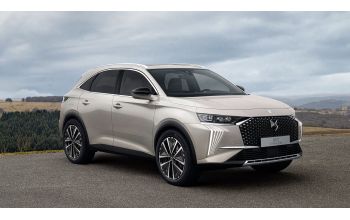
Introduction
Stellantis, formed from the merger of Fiat Chrysler Automobiles (FCA) and PSA Group in 2021, has quickly become one of the largest automotive manufacturers in the world. With a portfolio that includes brands such as Chrysler, Dodge, Jeep, Peugeot, and Citroën, Stellantis plays a significant role in shaping the future of mobility through innovation and sustainability. The company’s focus on electric vehicles (EVs) and advanced connected technologies makes it a key player in the rapidly evolving automotive landscape.
Recent Developments at Stellantis
In light of the global push towards greener transportation, Stellantis has announced ambitious plans to electrify its vehicle lineup. According to the company, by 2025, they aim to introduce over 75 fully electric models across its diverse brand range, catering to the growing demand for sustainable alternatives to traditional combustion engines. Stellantis has pledged to invest more than €30 billion in electrification by 2025, emphasizing its commitment to sustainability and environmental responsibility.
In addition to electrification, Stellantis is also focusing on enhancing its manufacturing capabilities. The company has recently unveiled new strategies for building battery plants in North America and Europe, which will enable them to produce batteries in-house and reduce costs associated with sourcing from third-party suppliers. This initiative further underscores the importance of vertical integration in the automotive industry.
Technological Innovations
Stellantis has made headlines for its cutting-edge technological advancements as well. The company has begun to integrate innovative features such as advanced driver-assistance systems (ADAS) and vehicle-to-everything (V2X) technology, enhancing the safety and connectivity of their vehicles. These technologies not only improve the driving experience but also align with Stellantis’s goals of increasing road safety and reducing traffic congestion.
Global Impact and Future Directions
Stellantis’s global footprint, combined with its ambitious sustainability initiatives and technological advancements, positions the company as a leader in the automotive sector’s transition towards electric mobility. Industry analysts expect Stellantis to capitalize on the increasing consumer preference for EVs, especially in North America and Europe, where governments are implementing stricter emissions regulations.
Conclusion
As Stellantis moves forward, its commitment to innovation, electrification, and sustainability could pave the way for significant transformations in the automotive industry. For consumers and investors alike, understanding Stellantis’s strategic direction and initiatives will be crucial in the coming years as the company aims to redefine the future of transportation. The alignment of corporate strategy with global sustainability goals reflects a broader trend in the automotive sector, making Stellantis a company to watch in the evolving landscape of mobility.

